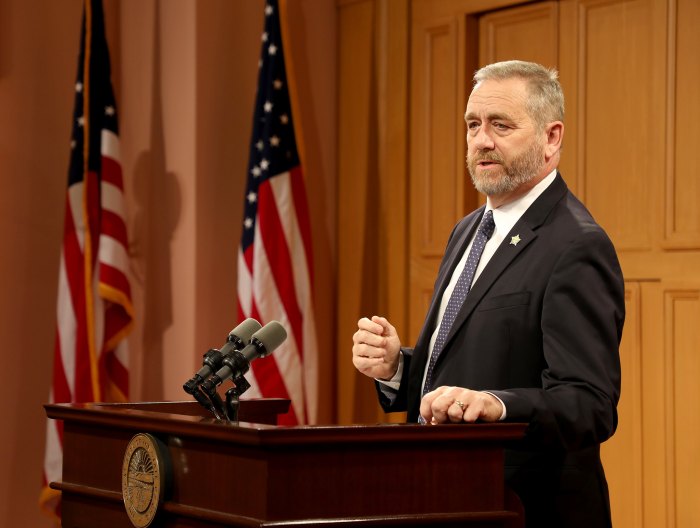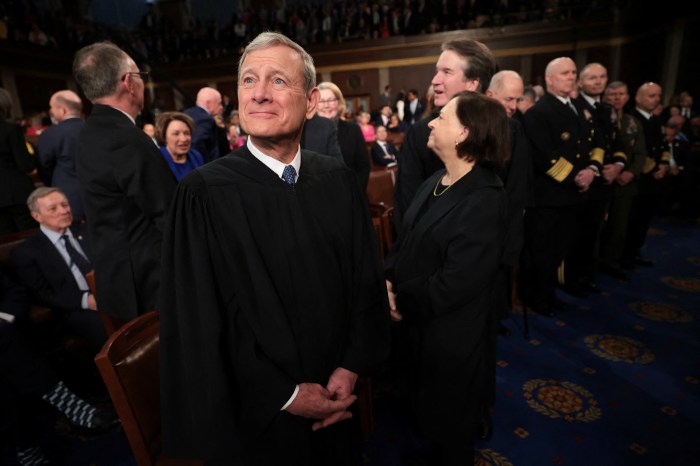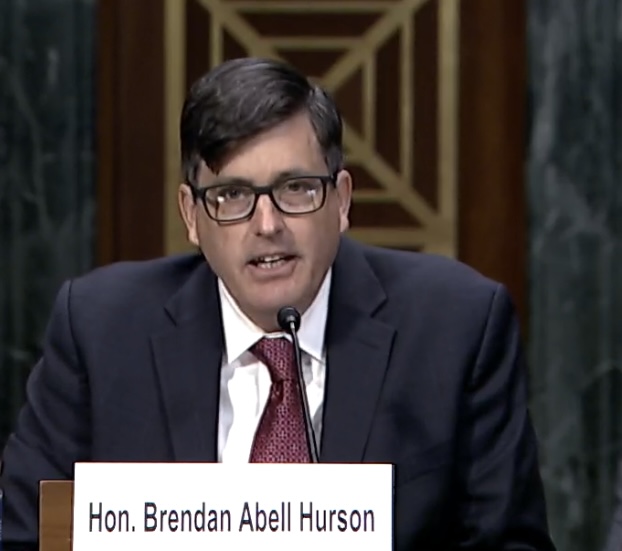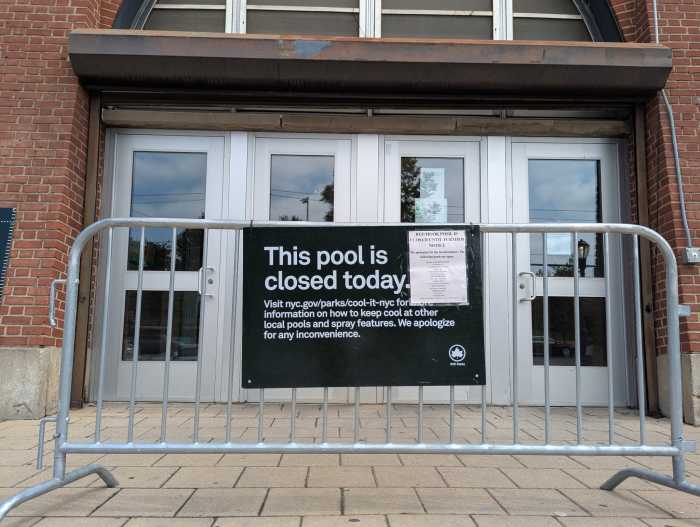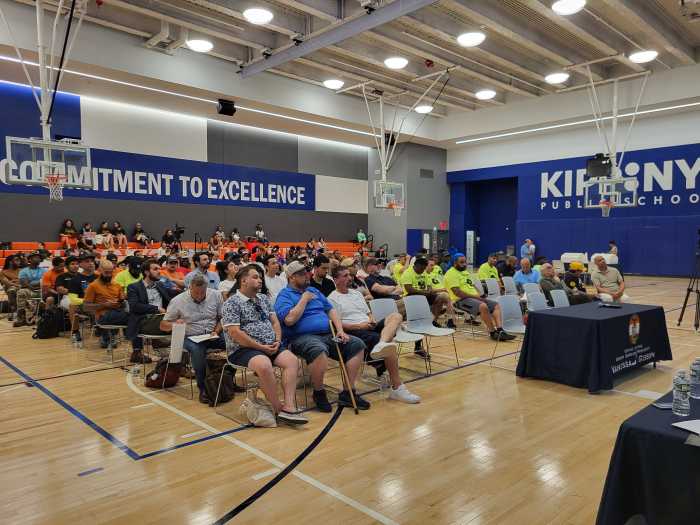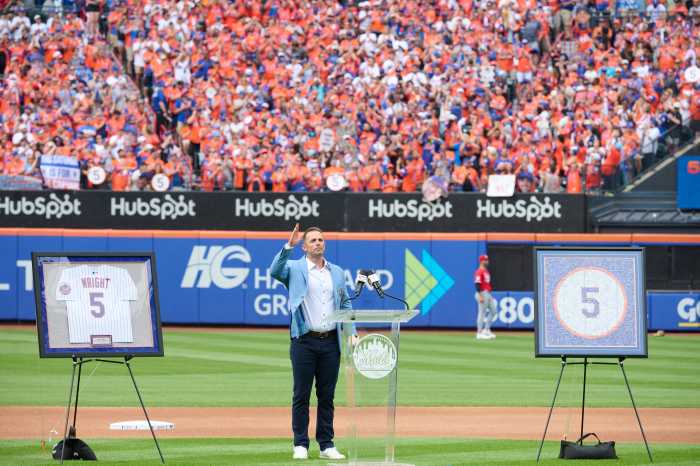Activists Scramble to Save Unique Sense of Place
By PAUL SCHINDLER
Florent Morellet is best known around town for the French eatery bearing his first name he has run in the heart of the West Village Meat Market for the past 17 years. A narrow, deep restaurant with a long counter reminiscent of an old-fashioned diner, an informal clutter of tables, and wall banquets watched over by innumerable maps of Paris, the Gansevoort Street establishment consistently draws big crowds with its traditional, rich cuisine.
Those more familiar with the annual rites of the West Village may know Morellet from his annual Bastille Day incarnation in Marie Antoinette drag doing the can-can with his waiters during the Gansevoort Street festival on July 14.
But few outside the circle of West Village community activists are likely to know a third role that Morellet has assumed –– as a leader in the effort to save from extinction the Meat Market, also known as Gansevoort Market, a roughly 20-square-block area defined by two and three-story buildings with metal awnings, taller warehouse buildings, cobblestone streets, and even the remnants of an old elevated railroad.
“We would like to create a historic district as something that will not stop development but will channel it,” said Morellet who is co-chair of the Save Gansevoort Market Task Force. “We feel like the district has a great history as a market since the late 19th century. Some imposing buildings were created by famous architects and others were less imposing, but still very much part of the fabric of this neighborhood.”
As one of the oldest intact neighborhoods in the city, Greenwich Village is well acquainted with historic preservation efforts. Ever since Village residents successfully organized more than 40 years ago to turn back Robert Moses’ vision for building a Lower Manhattan Expressway through Washington Square, preservation has been a burning issue. In 1969, the Greenwich Village Historic District that encompasses more than 2,000 structures covering fully one third of the Village became one of the city’s first landmarked areas.
But preserving pristine blocks of Victorian brownstones is one thing, advocating on behalf of a manufacturing district, particularly one that has not been unchanged by time but rather has dynamically adapted to a shifting economy, is another matter altogether.
Andrew Berman, the executive director of the Greenwich Village Society for Historic Preservation (GVSHP), a non-profit group founded in 1980 out of which the Save Gansevoort Market campaign grew, spoke directly to the unique nature of this particular historic preservation drive, covering an area from 16th Street south to Horatio, roughly from Hudson Street to the River.
“The Gansevoort area is quite gritty,” Berman told Gay City News earlier this year when he first came on board at GVSHP. “A lot of these structures are quite utilitarian. They have those enormous sheds hanging off of them. They’ve been modified over time to make themselves fit their current industrial uses. And that’s not your traditional kind of buildings that you look at for preservation. They’re not neat and easy. And they are not pure. That’s actually a kind of preservation that over time is gaining currency.”
Jo Hamilton, a West Village activist, who is Morellet’s co-chair at Save Gansevoort Market, offers a similar perspective, focusing on the practical issue of how to make the case for historic preservation successfully with the city’s Landmarks Preservation Commission.
“Gansevoort is a more difficult district because it is a commercial district, not like a row of town houses,” Hamilton said. “There are ongoing viable businesses there. It is kind of unique.”
Hamilton went on to distinguish Gansevoort from SoHo, another district that had manufacturing roots but also boasted structures that in and of themselves were worthy of preservation.
“In SoHo, you are saving those imposing cast iron factory and warehouse buildings,” she said. “In the Gansevoort area, there are pretty vernacular, simple buildings that taken together create a sense of place. You really have to do your homework to make the argument for preservation. This is a neighborhood that really works, a dynamic working neighborhood.”
In conversation after conversation, whether with Berman, or with Anthony Zunino, an architect who chairs GVSHP, or with Aubrey Lees, chair of the West Village’s Community Board 2, which is solidly behind the preservation effort, this concept of “a sense of place” comes up. And although the concept may be relatively untested, it is having at least some resonance with the Landmarks Preservation Commission, one of the final arbiters of the Gansevoort drive.
Asked about the case being made by preservationists, Mary Beth Betts, a spokesperson for the Commission, conceded, “It’s hard.”
“The majority of the city’s landmarked historic districts are residential,” she told Gay City News. “Some are commercial and industrial, but not many. Arguing the sense of place is the most difficult thing to define.”
Still, Betts reflected an open, even encouraging tone from the Commission.
“That area is very interesting,” she said, speaking of the Gansevoort Market. “It’s hard to kind of figure out, because change has been part of what has taken place.”
As with any preservation effort, the “figuring out” is a meticulous process, made up of research and documentation of the physical detail and history of every single structure. GVSHP, Save Gansevoort Market, and allied preservationists and activists have been hard at work on this for a long time and hope to have the bulk of their materials ready to present to Landmarks by September. Betts said that after that time, it will be easier to say what the likely outcome and timing of the preservation effort will be.
The efforts to save Gansevoort are not being made in a vacuum. With modern, sometimes high rise development already impinging on the area, the activists are concerned about several impending projects, one of which they hope to stop.
For almost a year now, Stephen Touhey of Landmark Development has been trying to win city approval for a 400-foot, 32-story residential development he is planning at 848 Washington Street at 13th Street. Because the district is zoned for manufacturing, Touhey has to win a variance from the city’s Board of Standards and Appeals.
Preservationists have responded by forming a specific coalition, dubbed M1-5 after the provisions of the zoning code concerning manufacturing districts, to challenge Touhey’s efforts to win the variance. They argue that Gansevoort has a diverse and freewheeling land use ecology that luxury apartment owners would undoubtedly challenge.
“Residential use in the middle of a manufacturing district will jeopardize the ability of businesses to do their work,” Hamilton argued. “Owners of these apartments will complain about truck noise, loud noise from [the biker bar] Hogs and Heifers, and all the rest. One of the beauties is that there are several different worlds there operating in their own time frames. There are meat packers, shops, and night clubs and restaurants.”
Indeed, Gansevoort exemplifies the sort of mixed-use paradise that preservationist icon Jane Jacobs wrote about 40 years ago in her classic Death and Life of Great American Cities. Gay men of a certain age will remember the Meat Market as a sexual playground, both indoors and out, in the late ‘70s and early ‘80s.
The Mineshaft and the trucks are long gone, but nightspots that probably couldn’t exist anywhere else –– not only Hogs and Heifers, but also the Lure, hell, and J’s Hangout––have been joined in recent years by a host of slicker, trendier nightclubs such as Lotus on 14th Street.
It’s the mixture of a vibrant nightlife with an old New York industry like meat wholesaling, and the cityscape attendant on that mixture, that preservationists fear could get be wiped out. In front of the Board of Standards and Appeals, they have made their case forcefully enough that Touhey has been required to respond to the question of how residential development would impact the district. The developer has delayed returning to the Board several times and now says he is looking at the feasibility of increasing the mix of commercial usage in the building.
As long as the building has any residential use, Touhey will have to win the variance to move forward, but he believes that by adding commercial tenants in the lower floors he may appease the concerns of the Board of Standards and Appeals, where he hopes to return by October. He is less optimistic about winning over the preservationists.
“I’m not sure that the people who are opposing us are going to support us even with those changes,” Touhey told Gay City News.
The Gansevoort preservation effort may be the most groundbreaking preservation effort going on in the Village, but it is far from the only one. In fact, when discussions with the Landmarks Preservation Commission about preserving Gansevoort began about five years ago, activists were talking about a larger far West Village district that would encompass the riverfront from 14th Street south to Canal Street. GVSHP is still interested in all of these areas, but Landmarks persuasively made the case to that group and others that segmenting areas for study would move things along more expeditiously.
The Greenwich Village Community Task Force (GVCTF) is a group that grew up in the past four years to focus separately on preservation of the Village waterfront. Like the Gansevoort effort, this push is also focused not on landmarking individual buildings, but rather on preserving an entire geographic zone, making the point that a wholesale approach is needed to preserve the area’s “unique sense of place.”
“Our position is that our neighborhood is under siege and if we want to save it, we have to act now,” said Zack Winestine who is active with the GVCTF.
According to Winestine, the area was originally intended to be part of the historic district created in 1969, but was dropped at the last minute as part of a political compromise.

